Opinion & Analysis
Focus on Fitness: What happens when an average golfer trains like a pro?
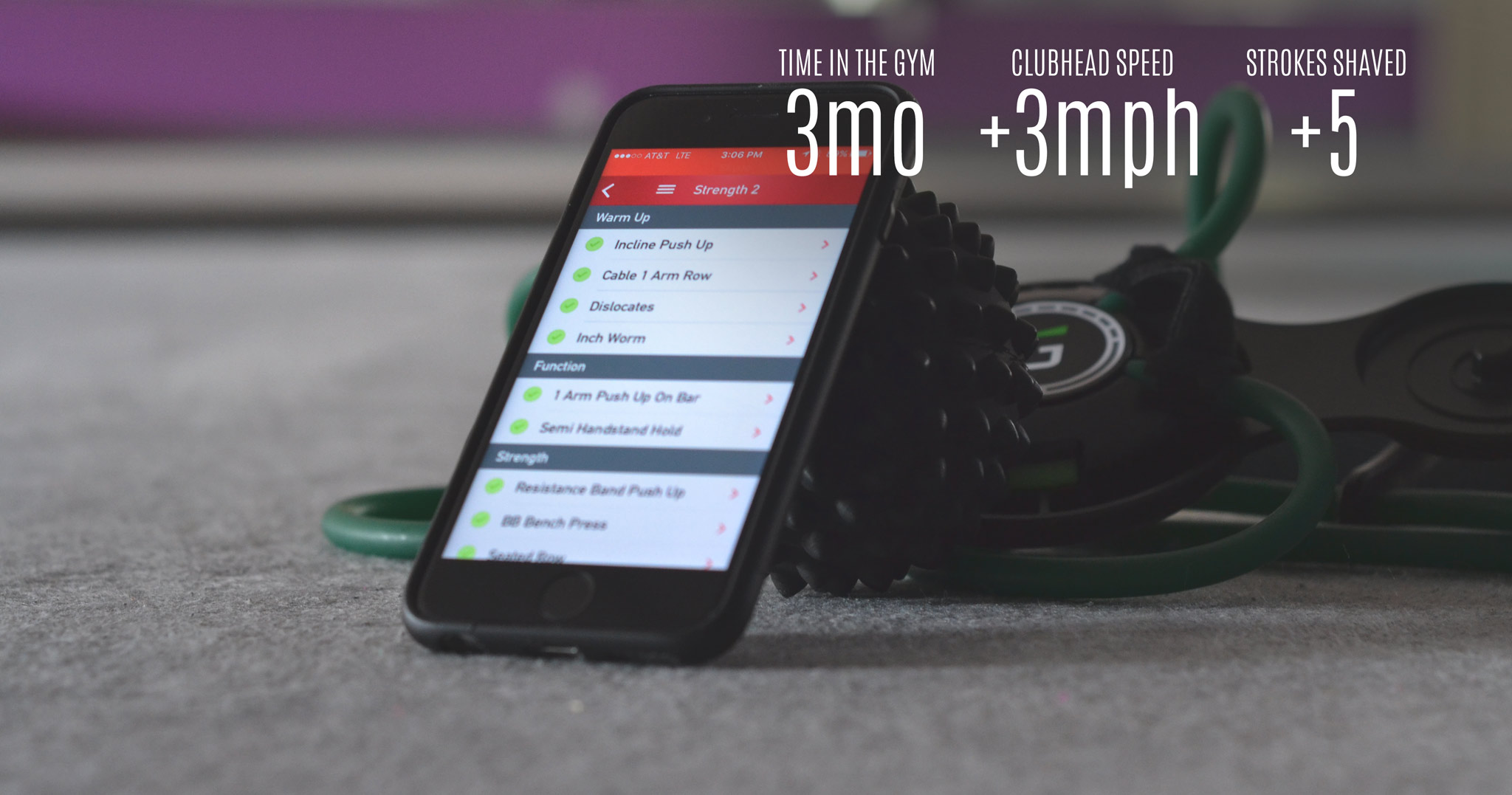
For many years, the words fitness and golf were rarely uttered in the same sentence. But now we can’t go through one commercial break without hearing how athletic golfers are and how everyone can benefit from a focus on fitness. Sure, if we all had a few hours each day to devote to the gym, we’d see an impact. But it got me thinking, can we quantify the impact a focus on proper fitness can play in the golf game of an amateur?
To help answer this question, I reached out to Nick Randall, a GolfWRX Featured Writer and Strength and Conditioning Coach to elite golfers such PGA Tour player Cameron Smith, who enthusiastically jumped on board to help guide me through this process. In addition to his professional clients, Nick offers virtual training to anyone just like what I went through.
The goal wasn’t to simply drop everything and act like a pro. I didn’t get to play golf for a living, and didn’t have the time they have to devote to the gym. The goal was to see if my golf game could improve by utilizing a tour-proven approach to fitness, guided by an elite-level trainer, but adjusted for the time and skill level of an amateur.
Nick was based in Australia at the time (he’s now in Jacksonville, FL), so all our interactions would be done remotely. As a technologist and app developer, this presented another opportunity to test the theory that technology is transforming the way we interact, even when it comes to something like fitness training.
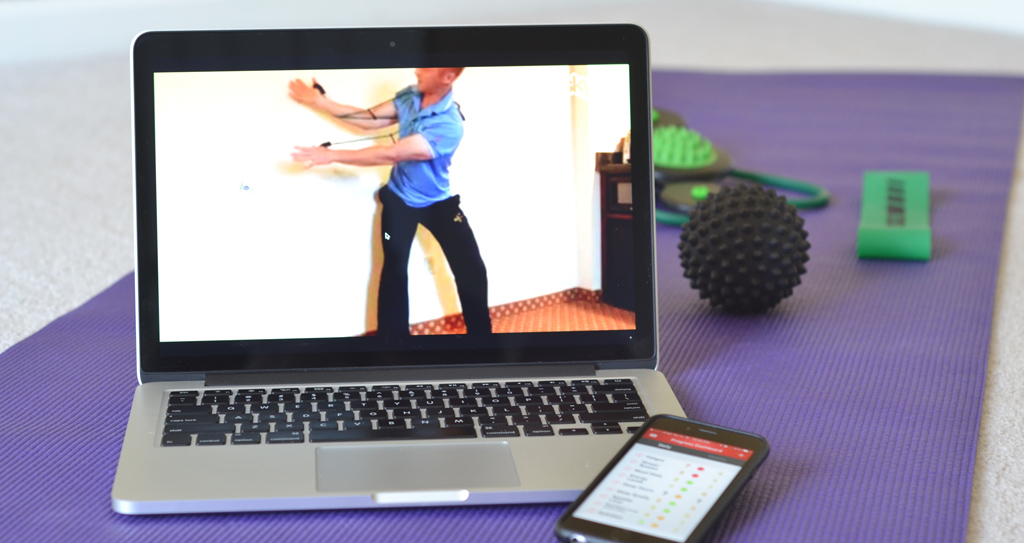
Over the course of four months, Nick guided me through three training programs, a daily motor pattern and mobility program, and nutrition and hydration advice, all via his Golf Fit iOS app, email, and Skype video chats. Our objective was to train the body to rotate more efficiently. This would result in some changes to my swing action, but without the intention of directly manipulating the club face or ball flight. My only swing changes for four months would be a direct result of this training, with no outside input.
I also wanted to be as honest and transparent as possible, so good, bad or ugly, you’ll find links to my DEXA Scans, Trackman Combine results, and swing videos below.
Did it work?
If you are wondering if you should bother reading on, it definitely worked. Physically, I’m stronger and have less back pain every day including after golf rounds or practice. On the course, my misses are tighter, my focus is stronger, and my endurance is better. We’ll cover all of this in detail, but Nick and this experience have fundamentally changed my approach to fitness in my everyday life, as well as my golfing life.
Baseline Evaluation
Any new fitness program must start with an evaluation. There are many ways to evaluate someone and ideally, this would be done in person. With Nick in Australia, we couldn’t do the assessment in person, so we spent a lot of time talking via Skype and I answered a detailed questionnaire. I’ve had back issues in the past, and one of the primary goals of the program was to strengthen that area to reduce daily pain, as well as pain associated with golfing. I have had medical assessments done on my back and passed along my charts to Nick for review.
I also sent Nick videos of my current swing, and we used my initial Trackman Combine videos as well during the evaluation phase.
DEXA Scan
In addition to the written assessment and discussions, I got a DEXA Scan so we could see where I might have imbalances or other trouble areas. A DEXA Scan is a full body scan that measures body composition including total body fat, breaking down bone mass, fat tissue, and lean muscle mass in the body.
To get the scan, I worked with Peter Fisher, the co-owner of DexaFit Atlanta. Let me just say, wow, that was eye-opening. The short, 10-minute scan produced images and reports that laid out how much body fat and lean muscle mass I have. I have too much body fat and that black and white image above was not pretty to see.
We took a look at the reports and decided if I focused on better nutrition, in addition to strength gains, I should be able to take my body fat percentage down to 25 percent (from 32.2 percent). It was a very aggressive goal, but a motivator as well.
Initial Trackman Combine
While we were not planning to make any direct swing changes, such as worrying about my inside takeaway, we did want to get a baseline of my current swing. The best way to do that is with a Trackman Combine, so I headed out to BridgeMill Golf Academy and worked with Tom Losinger, Director of Golf Instruction, who ran me through the combine.
The Trackman Combine is a standardized test that identifies strengths and weaknesses in the golf swing by scoring 60 shots from various yardages. If you haven’t had a chance to take the combine, I highly recommend it.
You can view the full Combine report as well as videos associated with some of my swings, by heading to this site I created.
Overall, I was happy with the results. The Combine was performed on a warm day with very little wind. My score was 69.2. I had 14 shots over 90 points. My max club speed with the driver was 104.8 mph and my longest drive was 278.8 yards.
Nick and I analyzed these results to find areas of weakness that could be attributed to poor body performance. The Combine swing scores are all about distance from the target. While dispersion can be driven by poor swing mechanics, it also is directly related to stability in the golf swing. We identified issues with my turn and posture from the videos and marked my max driver speed down as a baseline for any speed increases I might see.
The Fitness Program
Our fitness plan was broken up into three 1-month long programs. Each week included six days of routines: three strength days and three mobility and movement pattern days. That meant six days a week I was training my body with strength, mobility and movement pattern drills.
To track the progress, we used the Golf Fit iOS App, which Nick created for use with his athletes. Golf Fit is laid out to make it very easy to view your program, which includes photos and descriptions of the exercises, and complete your reps and sets.
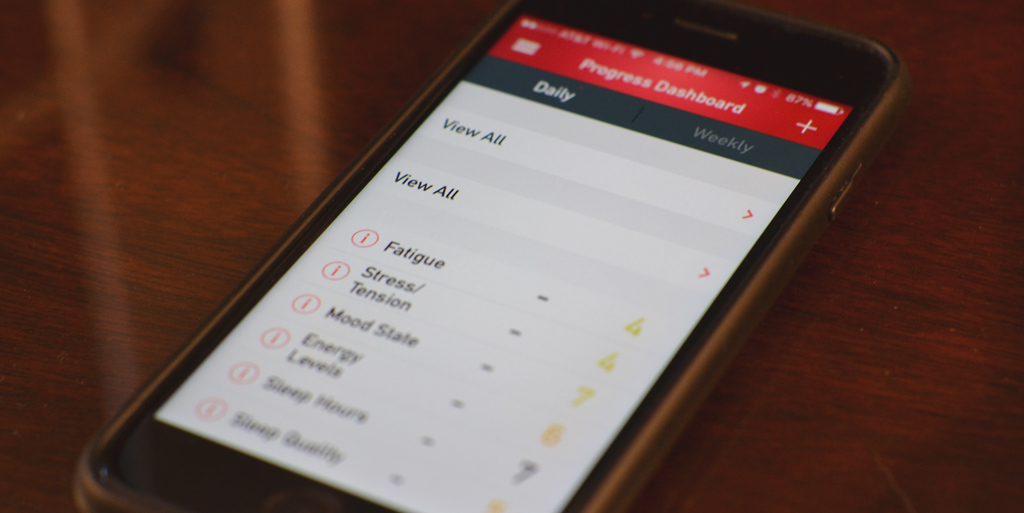
Month 1 was a primer month. It introduced me to some new exercises and eased me into my strength program. Month 2 switched up the exercises and ramped up the intensity. It also added some cardio to the warm up.
Month 3 was the hardest program and the one I found most interesting. It added more dynamic, golf specific exercises such as the Sidestepper with Band. I felt like I was able to better connect the exercise with how they would help my game. The Sidestepper, for example, was designed to activate the glutes and promote lateral stability, something very important during the golf swing.
In addition to the training programs, my favorite part of the Golf Fit app is the progress tracker. Most apps let you track your food or water intake and even how you feel, but they are cumbersome. With Golf Fit, you can easily score your progress, which brilliantly uses your averages as a default option. This made it very easy to track my progress every night.
I had many times over the course of the program, like when we had family in town over the holidays, where I wanted to do almost anything except my workout or nightly program. Everyone would be sitting in the living room, laughing and having a great time, and I’d be standing at the back of the room, Thoracic Pro strapped on, turning back and through over and over. But it felt great when I finished, especially on days like those.
I ended the program strong and even though our research for this story is technically over, my workouts continue. You can view my Month 1 program here and the free Golf Fit iOS app includes photos and explanations of each exercise
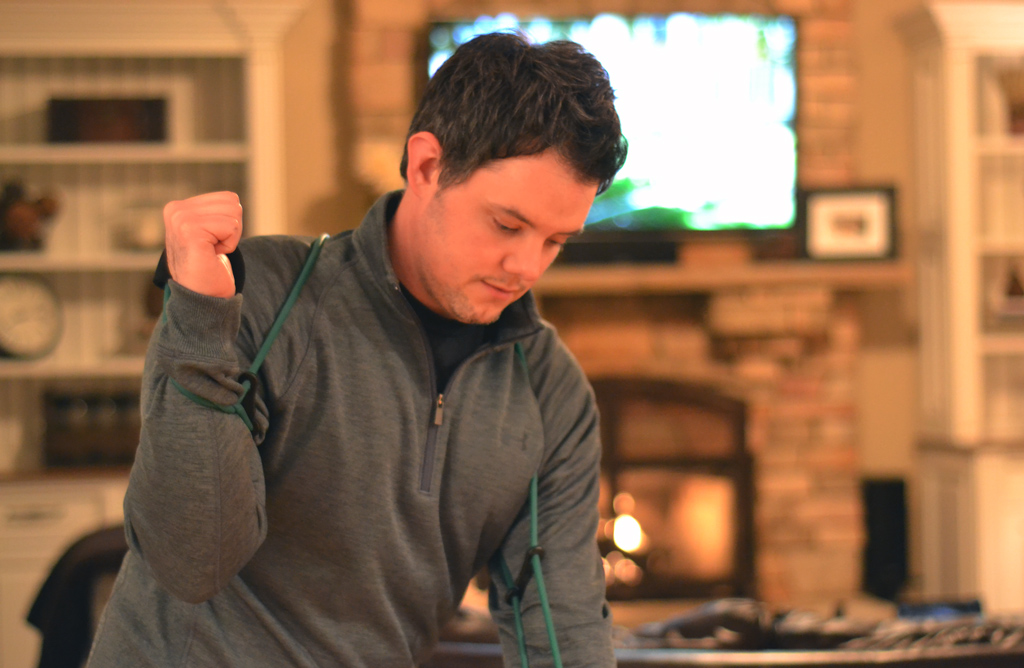
Essential Gear and My Spiky Ball Addiction
I bought two pieces of equipment — a Spiky Ball and the Thoracic Pro — to assist with my exercises, but you don’t have to. You can pick up some fitness bands at your local sporting goods store and be good to go.
I’m in love with my spiky ball. It’s this perfect little ball with raised rubber spikes you can roll anywhere you need to relieve tightness or discomfort. I used it every night to massage my lower back, legs and even chest and arms. Because it is smaller than a foam roller, you can get it into very specific problem areas. If you roll it around a sore spot, you’ll be amazed how loose that area becomes.
I also purchased a Thoracic Pro. My posture and scapula control wasn’t as good as it could be. The Thoracic Pro is a harness you slip over your shoulders and when you properly engage your shoulder blades, a spiky ball in the middle of your back as well as two points on your shoulders, gives you feedback you’re in the right position. All I had to do was pull my shoulder blades back and slightly down. By doing this, I had pre-engaged my shoulder blades. My posture looked shockingly better and my turn was instantly tighter with less moving pieces. Every day for the next few months, I used my Thoracic Pro during the movement and motor pattern routine, and now I feel like it is second nature. I even took it to the range and hit balls with it on, which had a huge impact.
Movement Patterns and Nightly Routine
In order to make any meaningful change in my motor patterns, including the way I turn back and through the ball, I needed a nightly routine. Nick broke this into two programs, one for days where I was training and one for off days. They consisted of a mix of motor patterns with the Thoracic Pro as well as stretching and massage with the Spiky Ball.
These routines quickly became something I really looked forward to every night. It would take about 30 minutes to complete the motor patterns and stretching, and I enjoyed every minute. I got some funny looks from my wife as I was rigged up to the Thoracic Pro, turning and stomping behind her, but it really did work. I cannot guarantee I’ll continue my fitness programs with as laser-like a focus, but I definitely will continue my motor pattern and mobility work every night.
The motor pattern work consisted of the following routine:
Nutrition and Hydration
Nick also offered basic nutrition advice, and he started by getting me to understand the majority of weight loss, which is something many of us want, is driven by nutrition. So eating cleaner became a goal. The Golf Fit app was a huge motivator to eating well and staying hydrated. Each night, the app asked me to score how I did on a scale of 1-10, ten being perfectly clean eating. I never did score a 10, but had quite a few nines. My average was 7-8, which as someone who works long hours and travels, is a comfortable way to start eating healthier.
For this story, the main takeaway is on-course eating. I’m amazed at how little my playing partners eat during a round. I used to only eat one protein bar around the turn. Nick’s recommendation was to take at least two snacks on the course and eat one mid-way through the front and back nines. For his players, he likes the Vega Sport Protein Bar or Macro Protein Bars, although there are others on the market. Adding an extra protein bar to my round made a big difference in my energy level. Below you can see what I typically have in the bag during a round.
I also started keeping a bag of honey glazed almonds with me. I’m not sure Nick would love that I took a perfectly healthy almond and covered it in sugar, but it is a delicious snack packed with protein and healthy fats. And I noticed when I offered my playing partners a protein bar or almonds, almost all of them took the almonds.
As for hydration, I’m convinced the majority of golfers don’t drink enough water, myself included. Why? Because it’s really hard to be fully-hydrated. Based on Golf Fit’s recommendation for my body weight, I need to drink about 110 ounces of water a day (or 7 standard bottles) to be well hydrated. On the course, I tried to drink one bottle every three holes, and I would put a Nuun electrolyte hydration tablet in one of the bottles on each nine holes. I also downloaded a Water App to track my intake through the day which notified me with a reminder to drink every 1.5 hours. You will have to try it for yourself, but when I was fully hydrated I truly felt stronger and less fatigued, which dehydration can cause.
Shots like this awkward sidehill fairway bunker shot (pictured below), where stability and focus are so critical to executing the shot, was where I really noticed the training, and on-course hydration and nutrition pay off.
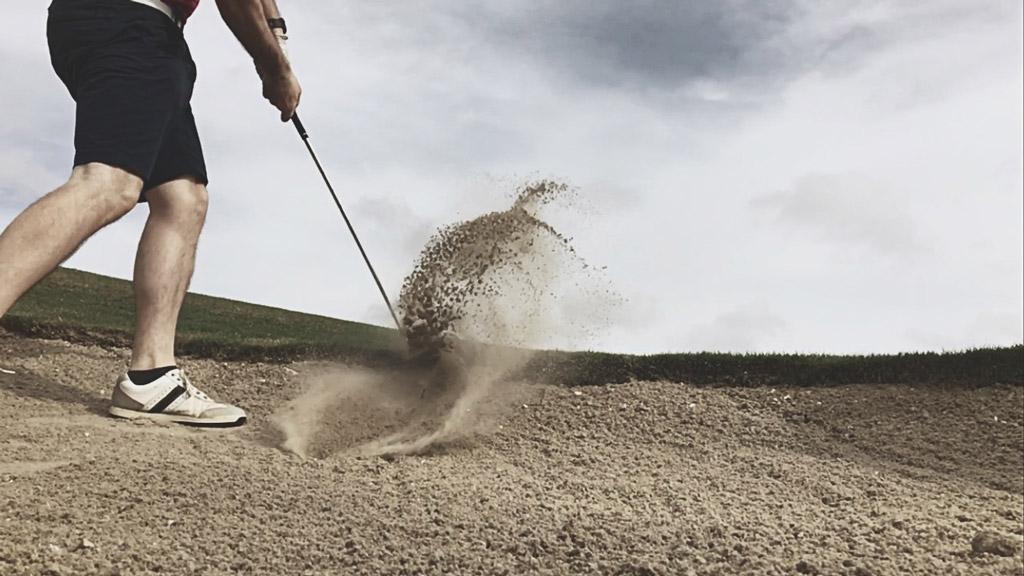
Before and After a Round or Range Session
Pro golfers don’t just show up on the range or the first tee without warming up, so Nick recommended I perform one round of my Motor and Movement Patterns routine before practicing or playing.
One round of the routine takes about 10 minutes, and I noticed a difference when I completed the routine before hitting the range. I didn’t feel like I needed to hit as many short wedges to fire up the body. This helped on mornings where I was first off the tee and the range was barely open. I could roll a few putts and tee off knowing I had already made about 20-30 full turns warming up the main muscles I would need.
I completed the same routine as a warm-down after a round or practice session. Try the following routine from Nick, before you head to the first tee.
Checking in with Nick
Throughout the program, Nick was checking in with me regularly, providing that extra motivation I needed. I was also sharing videos with him like the one below from early in our training program. These check in videos were especially helpful at times when I wasn’t seeing the same on-course progress as I was seeing during practice.
What Can You Do If You Can’t Go All-In?
I went “all in” over the past four months, but I recognize that isn’t for everyone. I’ve talked about this program to avid golf friends of mine and they are intrigued, but likely won’t devote the time I have.
With that in mind, Nick put together a routine anyone can do that will have a positive impact on your game. Click here to download a PDF of the routine.
The Final DEXA Scan
Once I had completed the last of the workouts, it was time to get a follow-up DEXA scan, so I went back to DexaFit Atlanta and worked with Peter Fisher.
We were hoping to see a decrease in body fat percentage and a small increase in lean muscle mass, and I was nervous about how the scan would go. I could tell I had lost weight and was getting stronger, but let’s be honest, if I said I was working out for three months and then got a body scan that shows no weight loss, you probably wouldn’t believe I had actually been in the gym.
I didn’t want that to happen, so I was happy to see I had decreased my body fat by 3 percent (-8.4 actual pounds of fat). Again, if you want to see the raw data, you can view the full results here.
I was initially disappointed by the loss of lean mass. It seemed counterintuitive, because I had been training more, but after talking with Nick it became more clear. I was eating cleaner, and likely taking in less calories despite trying to focus on eating more and better proteins. Our strength program wasn’t about big muscle gains, and we also only had three months. He was happy to see I essentially held onto the muscle mass, while decreasing my body fat. What I also found interesting is that I shed pounds without spending much time doing cardio. Sure, cardio is important, but it showcases the positives of better eating decisions, and what effect they can have on your health.
The Final Combine
I went into the final Combine with a healthy combination of nervousness and confidence. Almost every day for four months, I had focused on modifying my motor patterns or strengthening my body with the specific goal of improving my game. I was seeing improvement on the course, so one test on one day wouldn’t define all the work Nick and I had done. But I wanted to see results in plain, clear data. I headed back to BridgeMill Golf Academy and worked with Tom Losinger again.
We were hoping to see more clubhead speed with the driver and better dispersion overall, driven by a more stable lower body and more solid turn back and through the ball. In plain, clear, data, I saw the results I was hoping for.
I had more shots closer to the pin, more shots scored above 90, more “perfect” shots, and 3 mph more max clubhead speed with the driver. Below are some high-level stats comparing the two Combines. You can view the full report and videos here.
I left the Combine on a high. All the effort looked to be paying off… but we don’t play golf by hitting 60 shots during some test. My year-end trip to Florida, where I would play at least 5 rounds, would be the ultimate test.
Florida Trip and My Golf Game Now
I’ve been going to Florida for a week of golf and vacation every year for the last six or so years. I play at least five rounds during the week and look forward to it all year. I brought my spiky ball and Thoracic Pro with me so I could continue my mobility and motor pattern routines.
Just like the Combine, I was nervous and excited to hit the first tee. It wasn’t a testing bay anymore; it was the first tee on a real course after fully-dedicating myself to this program and plan the last few months. I “needed” to see a meaningful difference in my game.
After my first round, I knew something positive was happening. I was hitting more greens, splitting more fairways, and keeping myself out of trouble. I’ve never been more consistent or had as much control over my swing as I did over the five rounds during the trip. Not only did I lower my handicap and post my cleanest card on a front-9 (1-under), but I didn’t wake up midway through the trip with lower-back pain.
Here is a comparison of five rounds prior to starting this program, five rounds from last year’s trip and my five rounds during my trip this year.
Final Thoughts
A focus on fitness can improve the game of amateurs. Whether you go all-in or take it slow, you can see results. To help get started, you can follow the mini-programs laid out in this story, and there are trainers like Nick all across the country ready when you are.
I won’t say the past four months have been easy. But they also haven’t been hard. Eating healthier, drinking more water, and sticking to my fitness and mobility routines have become a part of my day-to-day life. I can only continue to improve from here, and the longer I focus on fitness, the more likely I am to be able to play this great game for many years to come.
- LIKE314
- LEGIT31
- WOW21
- LOL2
- IDHT2
- FLOP2
- OB0
- SHANK17
Opinion & Analysis
The Wedge Guy: What really makes a wedge work? Part 1

Of all the clubs in our bags, wedges are almost always the simplest in construction and, therefore, the easiest to analyze what might make one work differently from another if you know what to look for.
Wedges are a lot less mysterious than drivers, of course, as the major brands are working with a lot of “pixie dust” inside these modern marvels. That’s carrying over more to irons now, with so many new models featuring internal multi-material technologies, and almost all of them having a “badge” or insert in the back to allow more complex graphics while hiding the actual distribution of mass.
But when it comes to wedges, most on the market today are still single pieces of molded steel, either cast or forged into that shape. So, if you look closely at where the mass is distributed, it’s pretty clear how that wedge is going to perform.
To start, because of their wider soles, the majority of the mass of almost any wedge is along the bottom third of the clubhead. So, the best wedge shots are always those hit between the 2nd and 5th grooves so that more mass is directly behind that impact. Elite tour professionals practice incessantly to learn to do that consistently, wearing out a spot about the size of a penny right there. If impact moves higher than that, the face is dramatically thinner, so smash factor is compromised significantly, which reduces the overall distance the ball will fly.
Every one of us, tour players included, knows that maddening shot that we feel a bit high on the face and it doesn’t go anywhere, it’s not your fault.
If your wedges show a wear pattern the size of a silver dollar, and centered above the 3rd or 4th groove, you are not getting anywhere near the same performance from shot to shot. Robot testing proves impact even two to three grooves higher in the face can cause distance loss of up to 35 to 55 feet with modern ‘tour design’ wedges.
In addition, as impact moves above the center of mass, the golf club principle of gear effect causes the ball to fly higher with less spin. Think of modern drivers for a minute. The “holy grail” of driving is high launch and low spin, and the driver engineers are pulling out all stops to get the mass as low in the clubhead as possible to optimize this combination.
Where is all the mass in your wedges? Low. So, disregarding the higher lofts, wedges “want” to launch the ball high with low spin – exactly the opposite of what good wedge play requires penetrating ball flight with high spin.
While almost all major brand wedges have begun putting a tiny bit more thickness in the top portion of the clubhead, conventional and modern ‘tour design’ wedges perform pretty much like they always have. Elite players learn to hit those crisp, spinny penetrating wedge shots by spending lots of practice time learning to consistently make contact low in the face.
So, what about grooves and face texture?
Grooves on any club can only do so much, and no one has any material advantage here. The USGA tightly defines what we manufacturers can do with grooves and face texture, and modern manufacturing techniques allow all of us to push those limits ever closer. And we all do. End of story.
Then there’s the topic of bounce and grinds, the most complex and confusing part of the wedge formula. Many top brands offer a complex array of sole configurations, all of them admittedly specialized to a particular kind of lie or turf conditions, and/or a particular divot pattern.
But if you don’t play the same turf all the time, and make the same size divot on every swing, how would you ever figure this out?
The only way is to take any wedge you are considering and play it a few rounds, hitting all the shots you face and observing the results. There’s simply no other way.
So, hopefully this will inspire a lively conversation in our comments section, and I’ll chime in to answer any questions you might have.
And next week, I’ll dive into the rest of the wedge formula. Yes, shafts, grips and specifications are essential, too.
- LIKE11
- LEGIT3
- WOW1
- LOL1
- IDHT2
- FLOP1
- OB1
- SHANK1
Golf's Perfect Imperfections
Golf’s Perfect Imperfections: Amazing Session with Performance Coach Savannah Meyer-Clement

In this week’s episode, we spent some time with performance coach Savannah Meyer-Clement who provides many useful insights that you’ll be able to implement on the golf course.
- LIKE0
- LEGIT0
- WOW0
- LOL0
- IDHT0
- FLOP0
- OB0
- SHANK0
19th Hole
Vincenzi’s 2024 RBC Heritage betting preview: Patrick Cantlay ready to get back inside winner’s circle

Just a two-hour drive from Augusta National, the PGA TOUR heads to Harbour Town Golf Links in Hilton Head Island, S.C. Hilton Head Island is a golfer’s paradise and Harbour Town is one of the most beautiful and scenic courses on the PGA TOUR.
Harbour Town Golf Links is a par-71 that measures 7,121 yards and features Bermuda grass greens. A Pete Dye design, the course is heavily tree lined and features small greens and many dog legs, protecting it from “bomb-and-gauge” type golfers.
The field is loaded this week with 69 golfers with no cut. Last year was quite possibly the best field in RBC Heritage history and the event this week is yet another designated event, meaning there is a $20 million prize pool.
Most of the big names on the PGA Tour will be in attendance this week with the exceptions of Hideki Matsuyama and Viktor Hovland. Additionally, Webb Simpson, Shane Lowry, Gary Woodland and Kevin Kisner have been granted sponsors exemptions.
Past Winners at Harbour Town
- 2023: Matt Fitzpatrick (-17)
- 2022: Jordan Spieth (-13)
- 2021: Stewart Cink (-19)
- 2020: Webb Simpson (-22)
- 2019: CT Pan (-12)
- 2018: Sotoshi Kodaira (-12)
- 2017: Wesley Bryan (-13)
- 2016: Branden Grace (-9)
- 2015: Jim Furyk (-18)
In this article and going forward, I’ll be using the Rabbit Hole by Betsperts Golf data engine to develop my custom model. If you want to build your own model or check out all of the detailed stats, you can sign up using promo code: MATTVIN for 25% off any subscription package (yearly is best value).
Key Stats For Harbour Town
Let’s take a look at key metrics for Harbour Town Golf Links to determine which golfers boast top marks in each category over their past 24 rounds.
Strokes Gained: Approach
Strokes Gained: Approach is exceedingly important this week. The greens at Harbour Town are about half the size of PGA TOUR average and feature the second-smallest greens on the tour. Typical of a Pete Dye design, golfers will pay the price for missed greens.
Total SG: Approach Over Past 24 Rounds
- Scottie Scheffler (+1.27)
- Tom Hoge (+1.27)
- Corey Conners (+1.16)
- Austin Eckroat (+0.95)
- Cameron Young (+0.93)
Good Drive %
The fairways at Harbour Town are tree lined and feature many dog legs. Bombers tend to struggle at the course because it forces layups and doesn’t allow long drivers to overpower it. Accuracy is far more important than power.
Good Drive % Over Past 24 Rounds
- Brice Garnett (88.8%)
- Shane Lowry (+87.2%)
- Akshay Bhatia (+86.0%)
- Si Woo Kim (+85.8%)
- Sepp Straka (+85.1%)
Strokes Gained: Total at Pete Dye Designs
Pete Dye specialists tend to play very well at Harbour Town. Si Woo Kim, Matt Kuchar, Jim Furyk and Webb Simpson are all Pete Dye specialists who have had great success here. It is likely we see some more specialists near the top of the leaderboard this week.
SG: TOT Pete Dye per round over past 36 rounds:
- Xander Schauffele (+2.27)
- Scottie Scheffler (+2.24)
- Ludvig Aberg (+2.11)
- Brian Harman (+1.89)
- Sungjae Im (+1.58)
4. Strokes Gained: Short Game (Bermuda)
Strokes Gained: Short Game factors in both around the green and putting. With many green-side bunkers and tricky green complexes, both statistics will be important. Past winners — such as Jim Furyk, Wes Bryan and Webb Simpson — highlight how crucial the short game skill set is around Harbour Town.
SG: SG Over Past 24 Rounds
- Jordan Spieth (+1.11)
- Taylor Moore (+1.02)
- Wyndham Clark (+0.98)
- Mackenzie Hughes (+0.86)
- Andrew Putnam (+0.83)
5. Greens in Regulation %
The recipe for success at Harbour Town Golf Links is hitting fairways and greens. Missing either will prove to be consequential — golfers must be in total control of the ball to win.
Greens in Regulation % over past 24 rounds:
- Brice Garnett (+75.0%)
- Scottie Scheffler (+69.9%)
- Corey Conners (+69.0%)
- Shane Lowry (+68.3%)
- Patrick Rodgers (+67.6%)
6. Course History
Harbour Town is a course where players who have strong past results at the course always tend to pop up.
Course History over past 24 rounds:
- Patrick Cantlay (+2.34)
- Cam Davis (+2.05)
- J.T. Poston (+1.69)
- Justin Rose (+1.68)
- Tommy Fleetwood (+1.59)
The RBC Heritage Model Rankings
Below, I’ve compiled overall model rankings using a combination of the five key statistical categories previously discussed — SG: Approach (24%), Good Drives (20%), SG: SG (14%), SG: Pete Dye (14%), GIR (14%), and Course History (14%)
- Shane Lowry
- Russell Henley
- Scottie Scheffler
- Xander Schauffele
- Corey Conners
- Wyndham Clark
- Christiaan Bezuidenhout
- Matt Fitzpatrick
- Cameron Young
- Ludvig Aberg
2024 RBC Heritage Picks
Patrick Cantlay +2000 (FanDuel)
With the exception of Scottie Scheffler, the PGA Tour has yet to have any of their star players show peak form during the 2024 season. Last week, Patrick Cantlay, who I believe is a top-5 players on the PGA Tour, took one step closer to regaining the form that’s helped him win eight events on Tour since 2017.
Cantlay limped into the Masters in poor form, but figured it out at Augusta National, finishing in a tie for 20th and ranking 17th for the week in Strokes Gained: Ball Striking. The former FedEx Cup champion will now head to one of his favorite golf courses in Harbour Town, where he’s had immaculate results over the years. In his six trips to the course, he’s only finished worse than 7th one time. The other finishes include three third places (2017, 2019, 2023) and one runner-up finish (2022). In his past 36 rounds at Harbour Town, Cantlay ranks 1st in Strokes Gained: Total per round at the course by a wide margin (+2.36).
Cantlay is winless since the 2022 BMW Championship, which is far too long for a player of his caliber. With signs pointing to the 32-year-old returning to form, a “signature event” at Harbour Town is just what he needs to get back on the winning track.
Tommy Fleetwood +3000 (FanDuel)
I truly believe Tommy Fleetwood will figure out a way to win on American soil in 2024. It’s certainly been a bugaboo for him throughout his career, but he is simply too talented to go another season without winning a PGA Tour event.
At last week’s Masters Tournament, Fleetwood made a Sunday charge and ended up finishing T3 in the event, which was his best ever finish at The Masters. For the week, the Englishman ranked 8th in the field in Strokes Gained: Approach, 10th in Strokes Gained: Ball Striking and 16th in Strokes Gained: Putting.
Harbour Town is a perfect layout for Fleetwood, and he’s had relative success at this Pete Dye design in the past. In his four trips to the course, he’s finished inside of the top 25 three times, with his best finish, T10, coming in 2022. The course is pretty short and can’t be overpowered, which gives an advantage to more accurate players such as Fleetwood. Tommy ranks 8th in the field in Good Drive % and should be able to plot his way along this golf course.
The win is coming for Tommy lad. I believe there’s a chance this treasure of a golf course may be the perfect one for him to finally break through on Tour.
Cameron Young +3300 (FanDuel)
Cameron Young had a solid Masters Tournament last week, which is exactly what I’m looking for in players who I anticipate playing well this week at the RBC Heritage. He finished in a tie for 9th, but never felt the pressure of contending in the event. For the week, Young ranked 6th in Strokes Gained: Off the Tee and 6th in Strokes Gained: Ball Striking.
Despite being one of the longest players off the tee on the PGA Tour, Young has actually played some really good golf on shorter tracks. He finished T3 at Harbour Town in 2023 and ranks 20th in the field in Good Drive% and 16th in Greens in Regulation in his past 24 rounds. He also has strong finishes at other shorter courses that can take driver out of a players hand such as Copperhead and PGA National.
Young is simply one of the best players on the PGA Tour in 2024, and I strongly believe has what it takes to win a PGA Tour event in the very near future.
Corey Conners +5500 (FanDuel)
Corey Conners has had a disappointing year thus far on the PGA Tour, but absolutely loves Harbour Town.
At last week’s Masters Tournament, the Canadian finished T30 but ranked 20th in the field in Strokes Gained: Approach. In his past 24 rounds, Conners ranks 3rd in the field in Strokes Gained: Approach, 3rd in Greens in Regulation % and 24th in Good Drive %.
In Conners’ last four trips to Harbour Town, his worst finish was T31, last season. He finished T4 in 2021, T12 in 2022 and ranks 8th in Strokes Gained: Total at the course over his past 36 rounds.
Conners hasn’t been contending, but his recent finishes have been encouraging as he has finished in the top-25 in each of his past three starts prior to The Masters, including an impressive T13 at The PLAYERS. His recent improvement in ball striking as well as his suitability for Harbour Town makes Conners a high upside bet this week.
Shane Lowry (+7500) (FanDuel)
When these odds were posted after Lowry was announced in the field, I have to admit I was pretty stunned. Despite not offering much win equity on the PGA Tour over the last handful of years, Shane Lowry is still a top caliber player who has the ability to rise to the top of a signature event.
Lowry struggled to score at The Masters last week, but he actually hit the ball really well. The Irishman ranked 1st for Strokes Gained: Approach on the week and 7th in Strokes Gained: Ball Striking. As usual, it was the putter that let him down, as he ranked 60th in the field in Strokes Gained: Putting.
Harbour Town is most definitely one of Lowry’s favorite courses on the PGA Tour. In his six starts there, he’s finished in the top 10 three times, including third twice. Lowry is sensational at Pete Dye designs and ranks 7th in Strokes Gained: Total in his past 36 rounds on Dye tracks.
Lowry is perfect for Harbour Town. In his past 24 rounds, he ranks 5th in Strokes Gained: Approach, 2nd in Good Drive% and 5th in Green in Regulation %. If he figures it out on the greens, Shane could have his first win in America since 2015.
Lucas Glover +12000 (FanDuel)
This is one of my weekly “bet the number” plays as I strongly believe the odds are just too long for a player of Glover’s caliber. The odds have been too long on Glover for a few weeks now, but this is the first event that I can get behind the veteran being able to actually contend at.
Glover is quietly playing good golf and returning to the form he had after the understandable regression after his two massive victories at the end of 2023. He finished T20 at The Masters, which was his best ever finish at Augusta National. For the week, Lucas ranked 18th for Strokes Gained: Approach and 20th in Strokes Gained: Ball Striking.
Over his past 24 rounds, Glover ranks 9th in Strokes Gained: Approach and 13th in Good Drive %. Harbour Town is a short course that the 44-year-old will be able to keep up with the top players on Tour off the tee. He’s played the course more than 20 times, with mixed results. His best finishes at Harbour Town include a T7 in 2008, but recently has a finish of T21 in 2020.
Glover has proven he can contend with the stars of the Tour on any given week, and this number is flat out disrespectful.
- LIKE30
- LEGIT5
- WOW2
- LOL1
- IDHT1
- FLOP2
- OB0
- SHANK2
-

 19th Hole1 week ago
19th Hole1 week agoDave Portnoy places monstrous outright bet for the 2024 Masters
-

 19th Hole2 weeks ago
19th Hole2 weeks agoThings got heated at the Houston Open between Tony Finau and Alejandro Tosti. Here’s why
-

 19th Hole1 week ago
19th Hole1 week agoTiger Woods arrives at 2024 Masters equipped with a putter that may surprise you
-

 19th Hole2 weeks ago
19th Hole2 weeks agoReport: Tiger Woods has ‘eliminated sex’ in preparation for the 2024 Masters
-

 19th Hole4 days ago
19th Hole4 days agoTwo star names reportedly blanked Jon Rahm all week at the Masters
-

 19th Hole3 days ago
19th Hole3 days agoNeal Shipley presser ends in awkward fashion after reporter claims Tiger handed him note on 8th fairway
-

 19th Hole2 days ago
19th Hole2 days agoReport: LIV Golf identifies latest star name they hope to sign to breakaway tour
-

 19th Hole2 weeks ago
19th Hole2 weeks agoAddiction, spinal fusion, and scam artists – Everything Anthony Kim revealed in candid interview with David Feherty

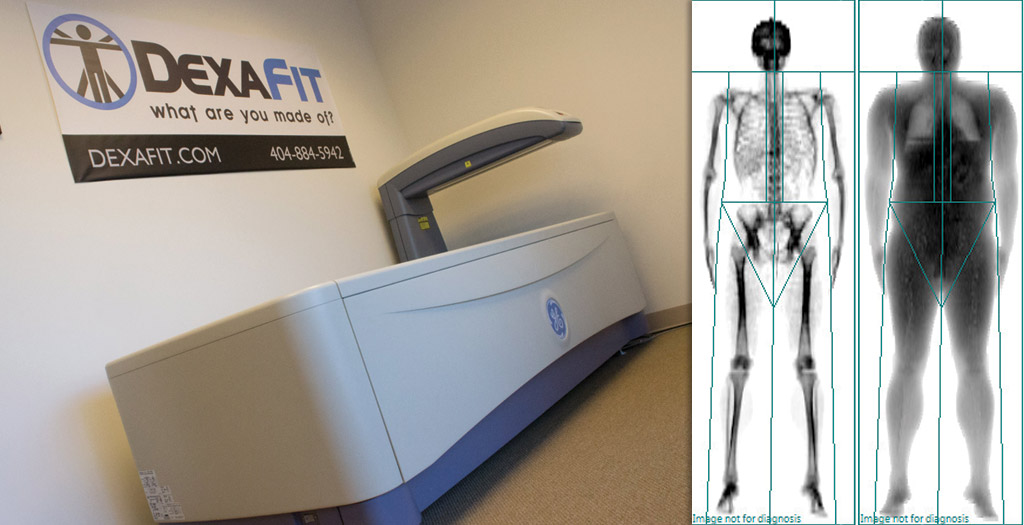

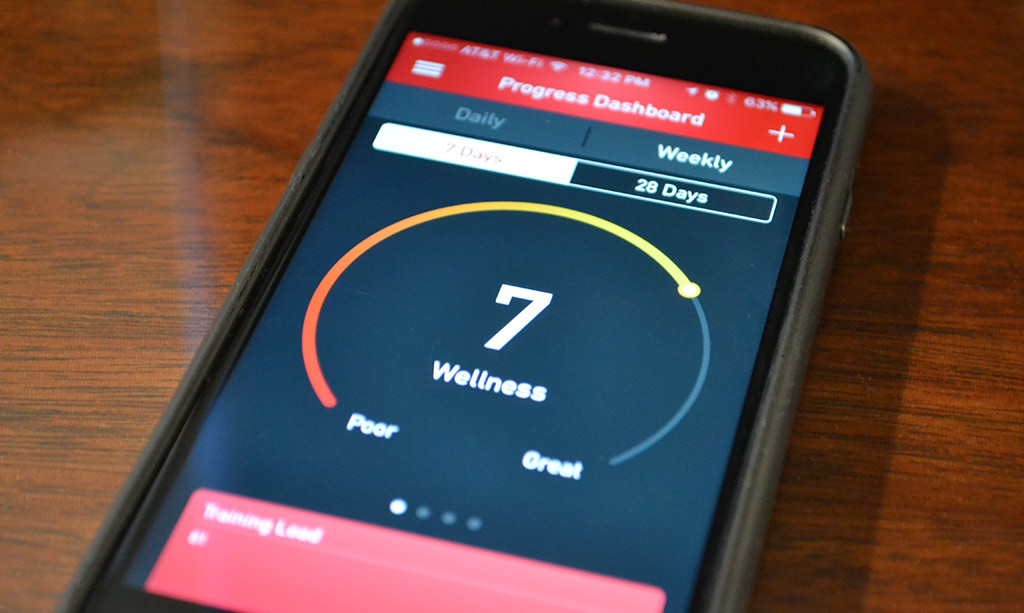
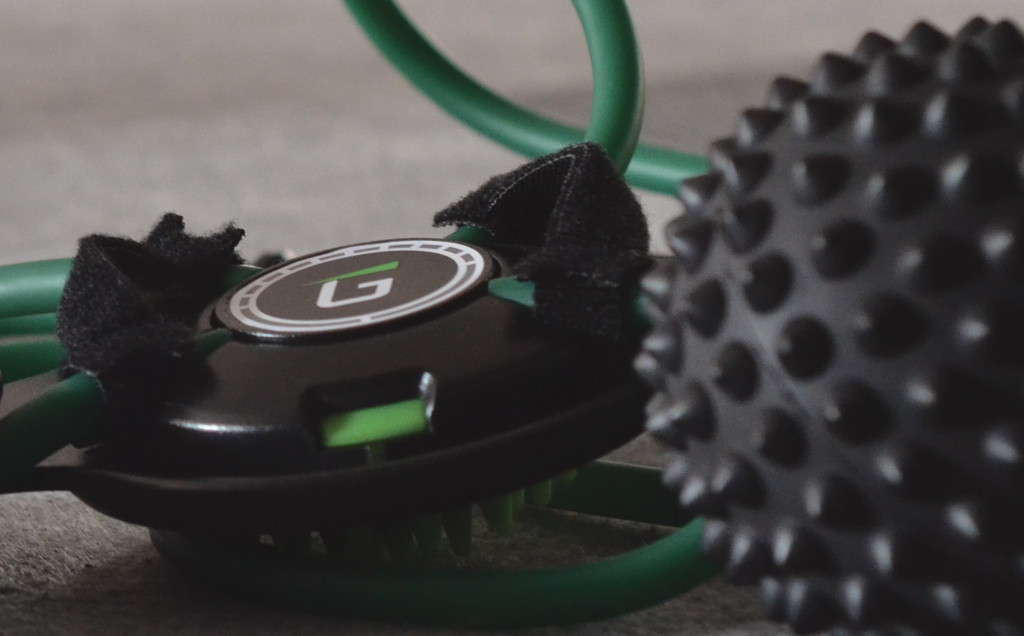
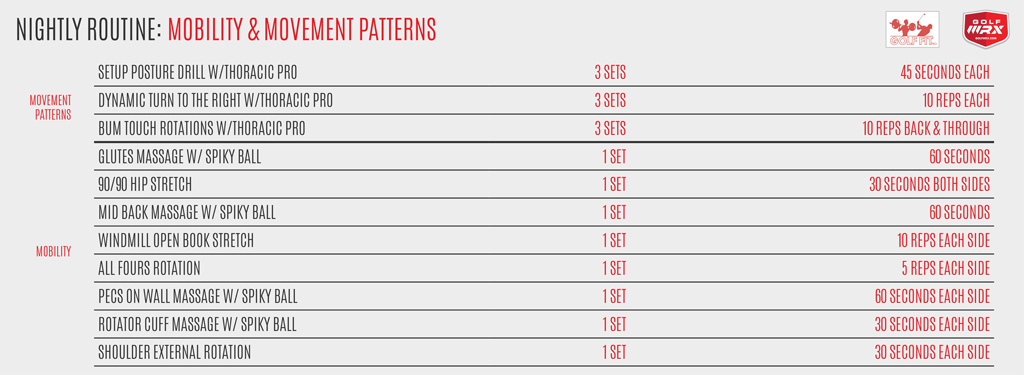
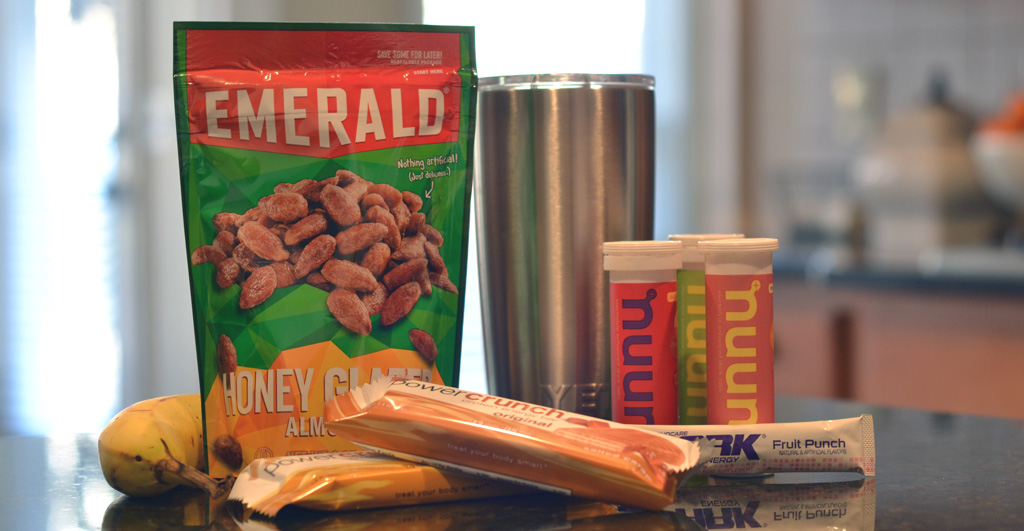

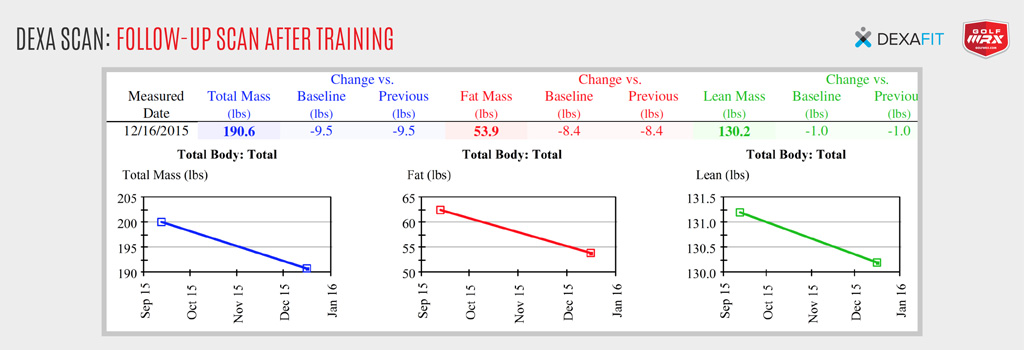


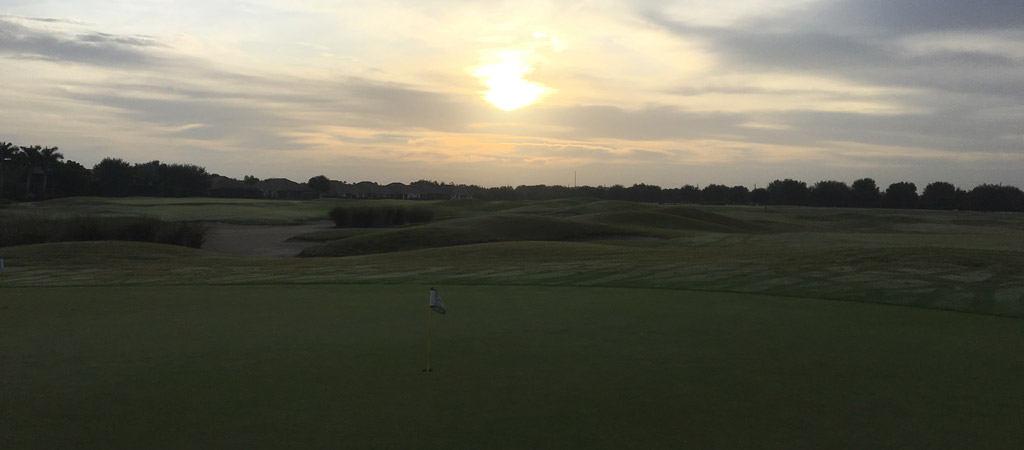
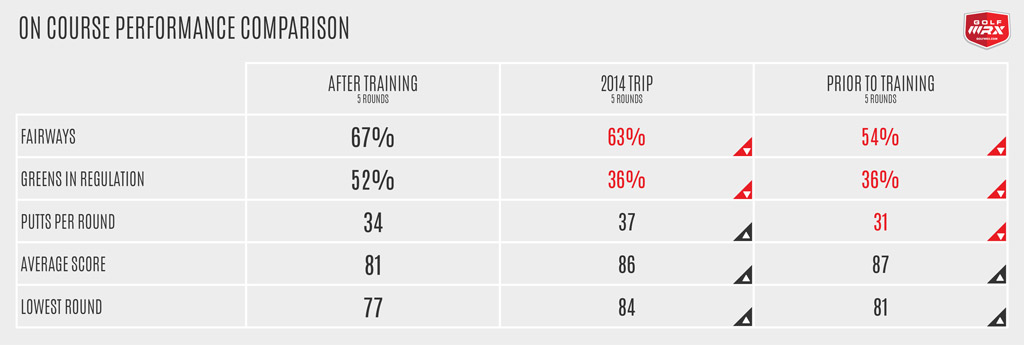



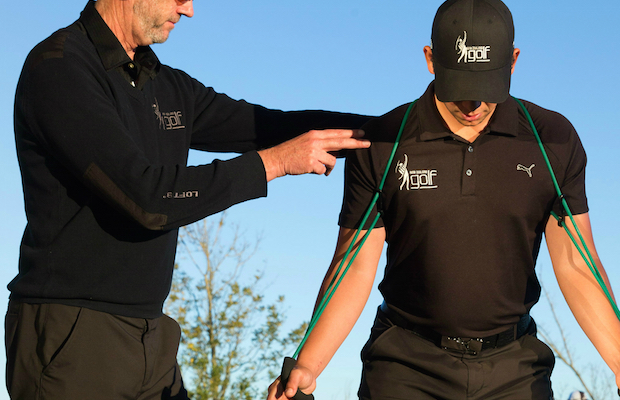
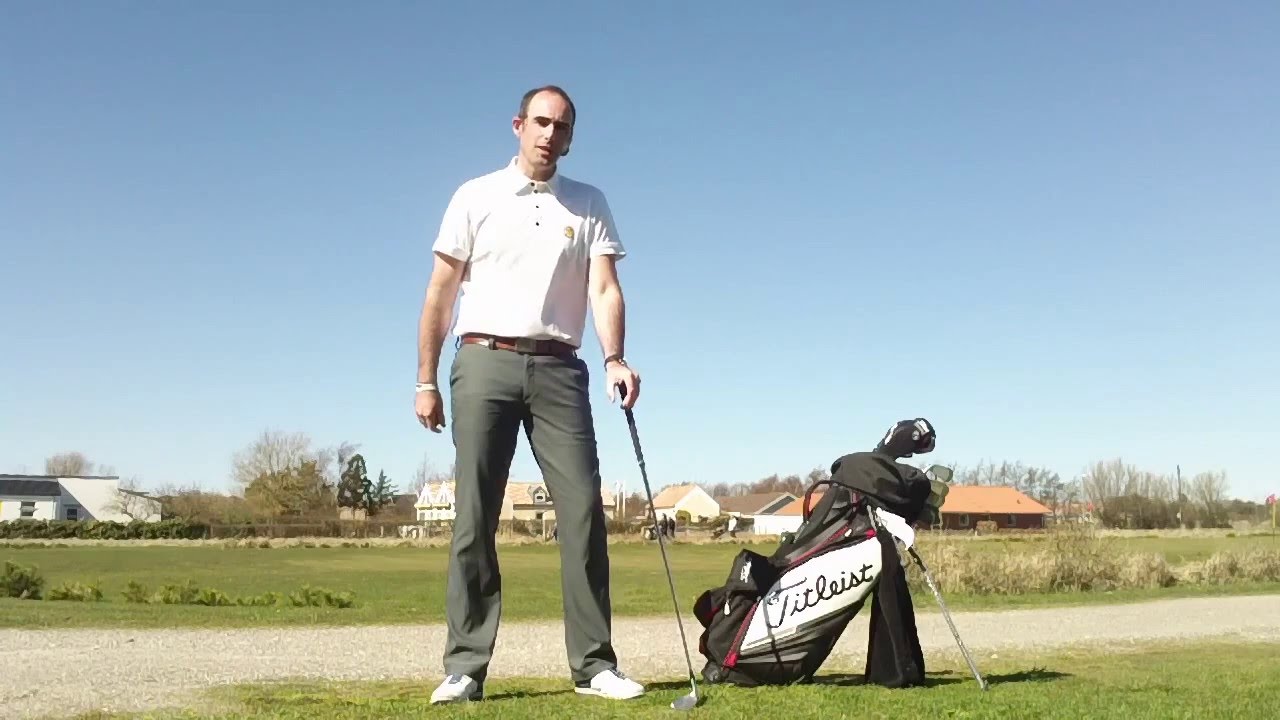
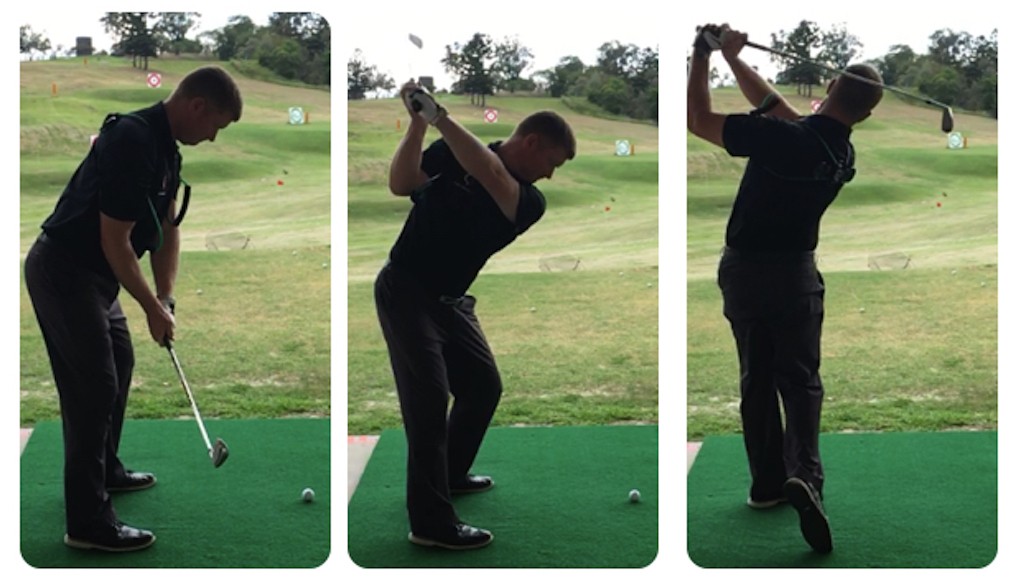
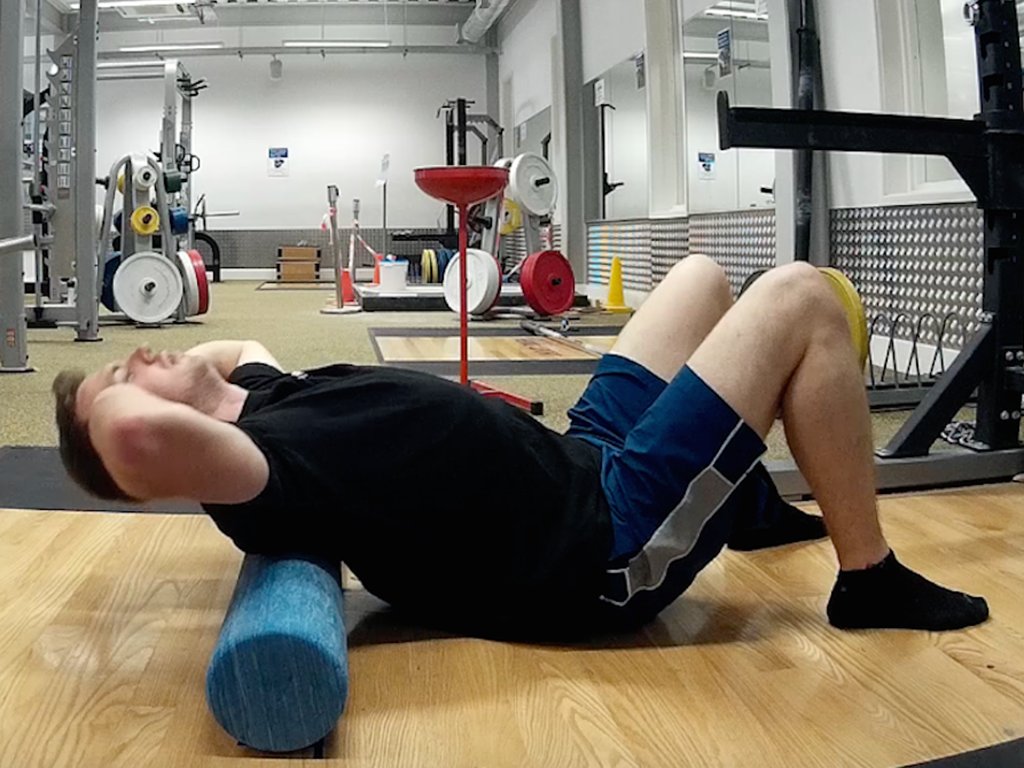
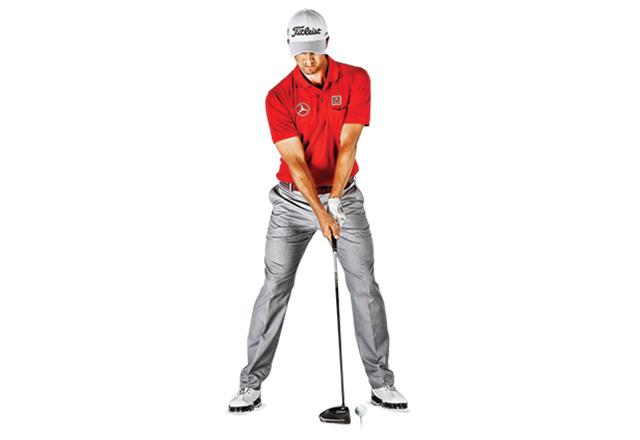













Scott
Jun 2, 2016 at 4:46 pm
Thanks for the article Kane. My biggest thought through this article was how are you a 10 handicap? You have a good swing and more than enough club head speed. Anyway, appreciate the time you put into this to help motivate me to improve my golf conditioning and game.
Nathan
Apr 19, 2016 at 2:37 pm
Good article! I am glad that the topic of fitness is catching on in our sport. However, I am very leary of Advocare products, particularly Spark, due to potentially harmful ingredients. So I would recommend closer inspection into that aspect of this article. Otherwise, keep it up!
Kane Cochran
Apr 19, 2016 at 3:28 pm
Thanks for your comments, Nathan! Spark is something I have had in my bag since prior to working with Nick (replacing coffee on early morning rounds and giving me a more flavorful way to drink 24oz of water early in the day). It was not part of this program or his nutrition advice. While I did research the product prior to starting to drink it, I’ll take another look, especially at their use of artificial ingredients like the sweeteners. Thanks for sharing your thoughts.
AC
Apr 18, 2016 at 8:26 pm
Thanks for the article. Is there a discount code available for Golfwrx members for the Thoracic Pro and Spiky Ball? Who do we contact to purchase?
Kane Cochran
Apr 19, 2016 at 9:17 am
Hey AC – You can use the code – WRX Article – for a 10% discount on the gear on Golf Fit Pro. You can purchase them here http://www.golffitpro.net/collections/equipment Enjoy the gear!
Kevin
Apr 18, 2016 at 3:07 am
Just go on You Tube , put in Titliest Performance Institue . I started Pilates 2 years ago SS wss 95mph now 102/104mph, all down to improved mobility. Interesting article though, but go practice short game and really see the over all performance
Ron
Apr 17, 2016 at 7:29 pm
This was a great and inspiring article. It’s a bit intimidating because it doesn’t feel like the Trackman, Dexa and other diagnostic aspects of your process are available to golfers who are not geographically close to the areas where these items are located. I would be happy to go through the process but I don’t really know where to find them near me.
Also, golffitpro.net is a mess. I’m sorry to say this because I was very inspired to do my own version of your program. I downloaded the iPhone app but had a real problem figuring out how to do the exercises. For example, he says for the initial exercise “Stop and pulse working through 3 speeds 33-99”. I had to search around the web to figure out what that means. Also, you need his equipment to do the workout, but at least 2 items are out of stock with no promise of getting more. That is very unimpressive.
Also, the PDF you linked to in your article with a sample workout is meaningless without instructions about how to do the exercises. His whole website is very user unfriendly.
The app is also problematic in that you set the timer but there is no audible signal for when the timer is over.
I would love to see a follow up article that’s a little bit more accessible to readers. Thanks.
Nick Randall
Apr 19, 2016 at 1:15 pm
Hi Ron,
Sorry to hear about the issues you have with the website. I have to say that this is the first negative feedback we have received regardless usability of the site, we will look into it.
Regards the 33-66-99 concept, see below for an explanation.
The timer on the app is being fixed in our latest round of app improvement work and will be available in the next update.
The example PDF program exercises can be found on the app, with photo and text explanations.
We are now back in stock for the items featured in the article.
33-66-99 principle
Ramsay McMaster developed the 33-66-99 principle as a guideline for intensity. He believed it could be applied as a philosophy to everything from your energy levels, to your warm up pre-round, to your golf swing tempo out on the course.
“It’s about making people aware of their energy levels as well as their feels, range of movement, endurance and body controls. If 99% is your peak and when you feel sharp, then 33% is when you feel sluggish, tired and fatigued physically.”
My understanding and interpretation when applying the principle to posture exercises and golf movement pattern drills is to consider 33-66-99 as 3 different levels.
33 is like the start level, doing the movements slowly and really concentrating on using good technique and learning the exercise.
66 is for once you have mastered 33 and are able speed the movement up and use more intensity whilst still holding good form and posture, thus increasing bio feedback and gaining more awareness of key areas in your body.
99 is where you are working at near maximum intensity and speed, looking to really fire up your golf body “feels” and ingrain the movement pattern into your “muscle memory”.
Sean Foldy
Apr 16, 2016 at 7:43 am
You have virtually zero hip turn in your swing, maybe that’s intentional or maybe you have serious physical limitations? To me it seems counter-intuitive to be training you core muscles when you don’t appear to be using them in your swing.
michael johnson
Apr 16, 2016 at 6:06 am
dear kane,
your short game sucks.
best, mjohnson
Christian
Apr 16, 2016 at 1:45 am
Reel them in with the misleading headline and then “the idea wasn’t to drop everything bla bla”
Joe the F Buck
Apr 16, 2016 at 12:18 am
I bet your numbers would have been even better if you had done a p90x type of program.
COGolfer
Apr 15, 2016 at 11:31 pm
Average golfer in the title was quite misleading. Much better to start with a good swing than it is to be in peak fitness. Interesting none the less.
:-ppp
Apr 15, 2016 at 10:31 pm
You know what happens? I pull my groin and get a hernia, and I can’t hump for a couple months :-ppp
John-Michael Fawley
Apr 15, 2016 at 4:12 pm
Very interesting article Kane. I have been looking to do something similar to this, but on a cheaper scale. My one question is, should a person actually have a evaluation to make sure the program that they are being put on will work best for them? Everyone has their own points they need to work so some exercises will help, but others might not. I would think it should be tailored to each person.
Kane Cochran
Apr 15, 2016 at 5:09 pm
Hi John-Michael – Thanks for your comments. I would 100% recommend a personal evaluation. In-person or, if you want to go with a route similar to the one I went, via skype with additional data (swing videos, charts, etc) to help create a clear picture. You are completely right, everyone has different areas they need to work on. I wanted to share exactly what I was working on in the program, for the sake of transparency. And we wanted to include some more general starter programs, but it should be tailored to each person. That is something Nick is very big on as well.
Nevin
Apr 15, 2016 at 1:50 pm
Interesting and useful article. Thank you.
Smoking Gun
Apr 15, 2016 at 1:18 pm
Money, time, and talent!!! If you are a working human being, married with kids you can forget becoming an elite golfer. When are you going to find the time? Heart, passion, and ability play just as big a part if not bigger than that!
larrybud
Apr 16, 2016 at 5:20 pm
You don’t need money to eat right (in fact, it’s cheaper than buying processed food and going out to eat), and it’s not like you need to spend 3 hours in the gym every day.
Raven
Apr 15, 2016 at 12:29 pm
So what you are saying is that being fitter and stronger helps you perform a physical task better? Who knew! Seriously, if anyone has the time to increase their focus on a task in a productive, educational manner then they will learn from it. Very few of us have that time, and even fewer improve without that level of effort. Your article could have been generalised for anything in life.
DC3
Apr 15, 2016 at 12:48 pm
I bet you’re delightful at cocktail parties.
larrybud
Apr 16, 2016 at 5:23 pm
What were you hoping from this article, that you’d play better if you woke up drunk?
David Smith
Apr 15, 2016 at 12:11 pm
Kane: the website says that the thoracic pro is out of stock. Any idea how/when/where we can get one? Thanks.
Kane Cochran
Apr 15, 2016 at 5:10 pm
Let me check with Nick and see if there are other options for you. I’ll let you know as soon as I find out.
Bogeypro
Apr 15, 2016 at 10:38 am
How much did all the personal training with Nick cost (ballpark figures, if you don’t want to be too specific)?
Big Slice
Apr 15, 2016 at 12:24 pm
Personal coach, trackman sessions, body scans. My guess is this would run the avg golfer a few thousand $.
Kane Cochran
Apr 15, 2016 at 5:05 pm
Nick has various levels of of training programs (http://www.golffitpro.net/products/golf-fit-pro-online-coaching) but one that is most similar to this one is $99 per month.
AllBOdoesisgolf
Apr 15, 2016 at 10:10 am
so, what I want to know, what is it like in the future? Who is running for President? Is there good weather in August 2016 and are we looking at a lot of snow in December 2016?
Milo
Apr 15, 2016 at 9:37 am
How much did this cost?
Kane Cochran
Apr 15, 2016 at 11:29 am
Hi Milo – DexaFit Atlanta, Tom Losinger at BridgeMill Golf, and Nick donated their time to make this story possible. For the spiky ball and Thoracic Pro, I paid the wholesale cost. Nick is willing to give GolfWRX readers a discount on the Spiky Ball and Thoracic Pro. If you’re interested, just let me know.
Here is an estimated breakdown of costs: DEXA Scan = $150 for each scan. Trackman Combine = $125 or less for each session. Thoracic Pro = $89. Spiky Ball = $12.90. Nick has various levels of training packages. I will post a comment on his ballpark costs soon. Hope that helps.
Milo
Apr 15, 2016 at 3:43 pm
Actually not as much as I thought. But still some good coin. Thank you for the answer.
Large chris
Apr 15, 2016 at 7:59 am
It’s all good stuff and well done for the commitment, although generally if you spend the equivalent time just practicing the short game and putting you would also see score improvements…. The only thing I would take issue with is this modern mantra of eating and drinking constantly to keep hydrated and keep energy levels up. It really isn’t how the body is designed, if you read about IF (intermittent fasting), caveman diet or even typical housewife 5/2 diets it is clear that the human body is EXTREMELY adaptable to short term variances in calorie, macro and hydration levels. We’d have died out as a species 5000 years ago if that wasn’t the case when one big meal a day was the norm.
Philip
Apr 15, 2016 at 9:50 am
For calorie intake I am at my best when I am slightly hungry so that my blood does not rush to my digestion area. However, for hydration I quickly fade once it kicks in. I would expect most people live a large part of their lives being slightly to moderately dehydrated, especially during outdoor activities. I’ve drunk 4-5+ litres of water during a round and never had to pee until the next morning. We can lose a lot of water when outside. Surviving and being at our optimal are not the same thing.
tony
Apr 15, 2016 at 2:30 pm
agreed with this line of thought. i can go to work and function on 2 hours of sleep. am i going to be in top shape to perform at an optimal level at work on 2 hours of sleep vs. 7….No.